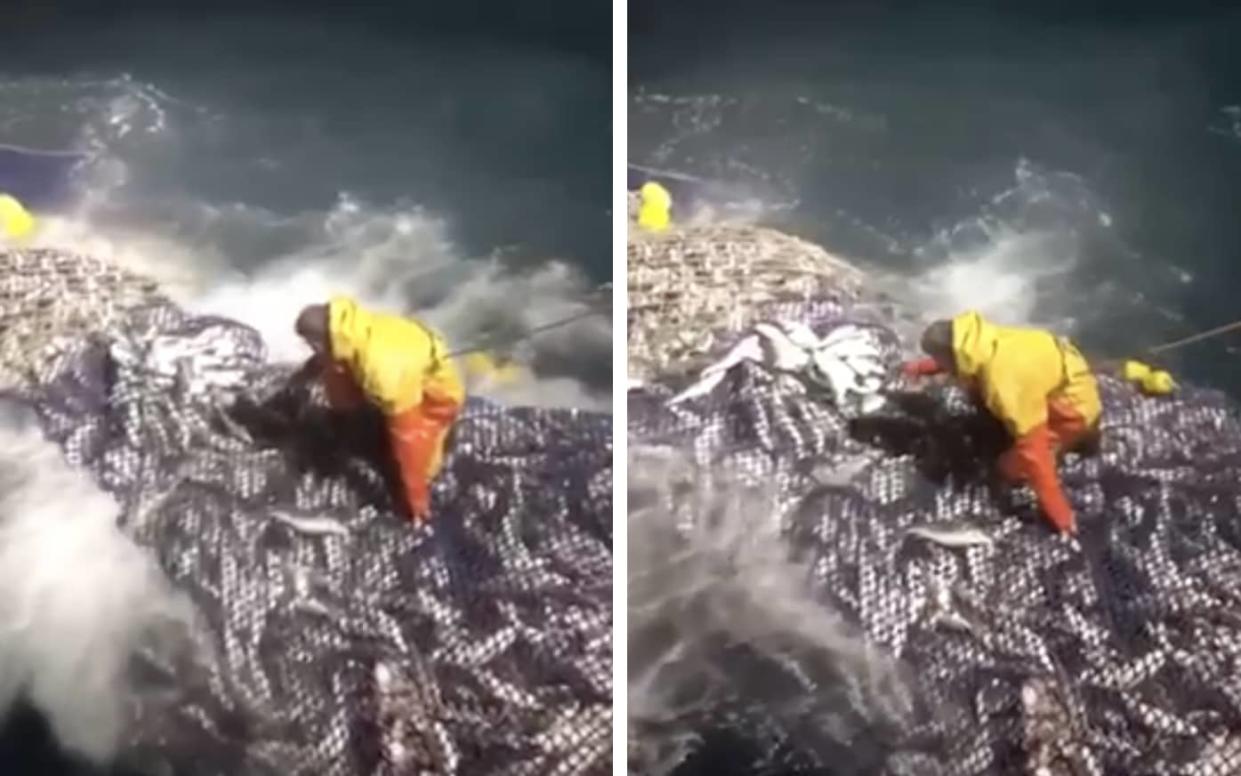Foreign trawlers 'napalming' Channel by dumping tons of fish back into water

Foreign trawlers are dumping fish in the Channel as the Government refuses to take action to curb the practice.
Footage obtained by The Telegraph shows a Dutch fly-shooter dumping thousands of fish last month by cutting open a net.
There are strict limits on bass because of depleted numbers, but fly-shooters catch them accidentally while fishing for other species and must then return them to the sea, following UK Government rules.
Fly-shooters fish by dragging weighted ropes along the seabed with a long thin net in between, designed to capture entire shoals of fish.
However, campaigners argue that it shows fly-shooters “cannot operate within sustainable legal limits”.
Dr Ian Hendy, a fisheries expert at the University of Portsmouth’s Institute of Marine Sciences, estimated that the video showed 10 tons of sea bass, equal to between 5,500 and 11,000 individual fish.
Despite being released, many would die through being caught in the net or because of damage to their swim bladder caused by being brought rapidly to the surface, he said.
‘Big fishermen don’t care... as long as they make big bucks’
He said: “The impact to losses of genetic variability with spawning individuals is huge with such a vast capture in one swoop. This is by no means a reflection on inshore, artisanal fishermen. Big fishermen swoop in and don’t care about atrocities as long as they are making the big bucks.
“They’re continually doing these atrocities without reprimand. It happens a lot more frequently than people realise. It wipes out whole fisheries – it’s the equivalent of napalming the ocean.”
The trawling also releases carbon dioxide by scraping along the seabed, leading to calls for it to be banned.
The catch seen in the video is understood to be unusually large, but experts said “bycatch”, where fish are caught by accident by trawlers, was common and often resulted in dumping.
The practice has attracted controversy and criticism from smaller fishermen who say that it damages fish stocks and prevents them from making a livelihood by fishing more sustainably.
Of the 75 boats that have a right to carry out fly shooting in British waters, 28 are French, 24 are Dutch, and six are Belgian. The remaining 17 are British.
Kees Taal, who owns the Lub Senior, which is the boat shown in the footage, said: “In the first place, avoiding bycatch is an issue for all fishery methods used in the world and the fishery sector is working on it to reduce this as much as possible. These are incidents. Release of the catch as fast as possible is in this case the best option to increase maximum survival of the fish.”
Fiona Nicholls, the head of oceans at Greenpeace UK, said: “If we want to breathe life back into our coastal communities and local fishing fleet, we must put the recovery of ocean life at the heart of our fishing policy.
“Industrial fishing methods like fly-shooting do the precise opposite of that, and this footage is yet further proof that fly-shooters cannot operate within sustainable legal limits.
“If the UK Government continue to use their new Brexit powers over our fisheries to license sledgehammers for nut-cracking, they will drive both fish and our local, sustainable fishing fleet out of UK waters.”
A Defra spokesman said: “Protecting our vital fish stocks and those dependent on them is paramount, which is why all EU vessels granted access to fish in UK waters must comply with UK rules and regulations, including those on sustainability.
“We have heard the concerns raised about fishing pressures in the English Channel and want to work with industry to tackle the issues.
“We have already stopped pulse trawling by EU and English-registered vessels in UK waters and, now we have left the EU, additional safeguards for our Marine Protected Areas are being consulted on. Any decisions on managing fisheries in future will be based on the best available evidence.”

 Yahoo News
Yahoo News 
